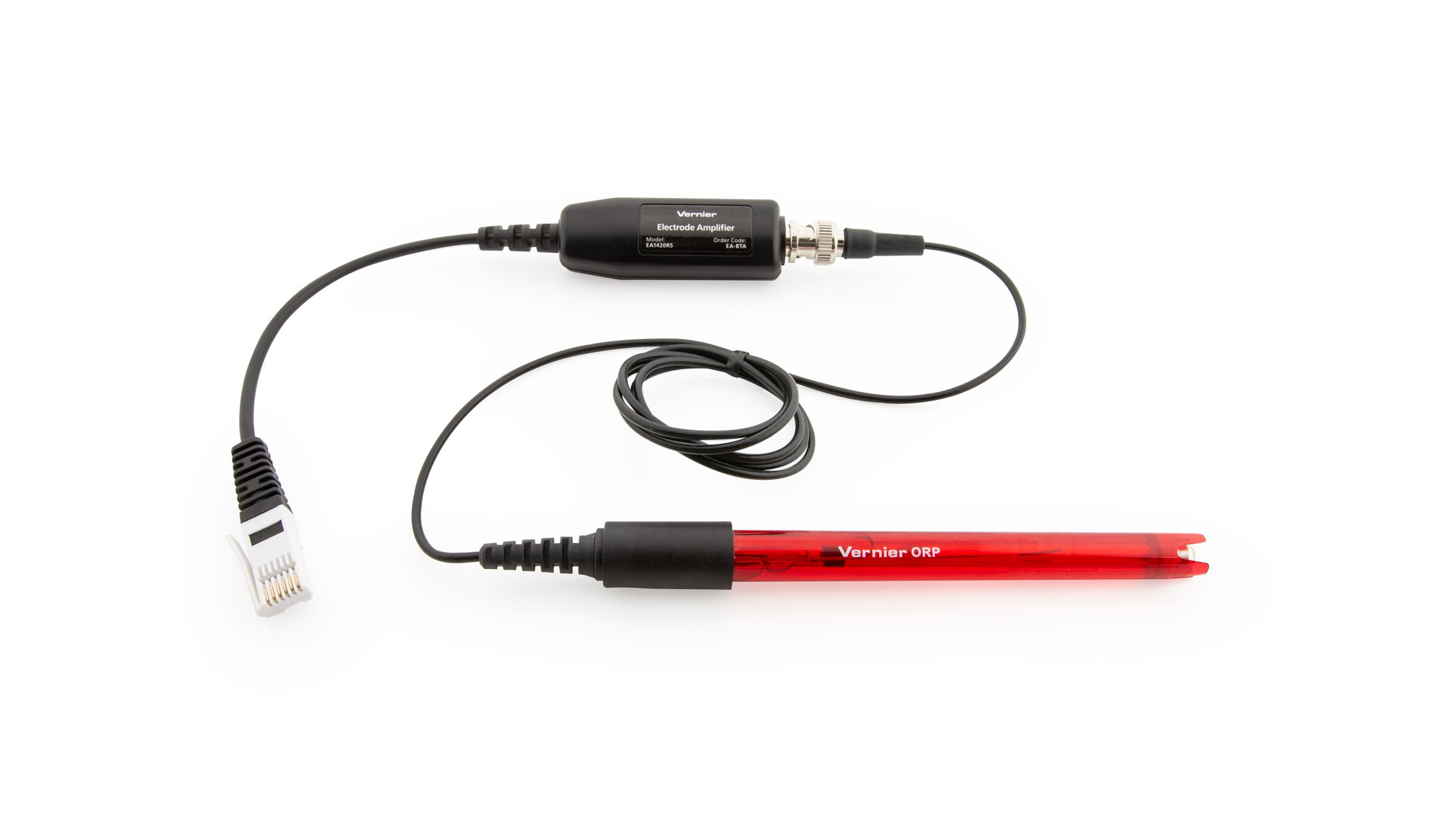ORP Sensor (ORP-BTA )

Troubleshooting
- Primary Test: The ORP Sensor consists of an ORP Electrode connected to an Electrode Amplifier using a BNC connector. Connect the Electrode Amplifier to the interface. Run the data-collection program and set up the ORP Sensor to read in units of mV. Place the tip of the sensor in a buffer solution of known pH and check the readings.
Typical readings, in mV, of various buffer solutions*
⚬ pH 4 buffer solution: 350 – 360 mV
⚬ pH 7 buffer solution: 270 – 280 mV
⚬ pH 10 buffer solution: 100 – 110 mV
* Buffer solutions can be prepared using pH Buffer Capsule Kit (
Additional Troubleshooting
- Do any of your sensors require special storage?
- Where can I get calibration solutions for an ORP sensor?
- How can I keep my pH or ORP storage solution from spilling when the sensor is in use?
- Electrode Amplifier Troubleshooting and FAQs
- I found an ORP electrode that was stored dry. How can I test it to see if the electrode is still working?
- Why are the readings from my ORP sensor noisy?
- Can I use the ORP Sensor for Cyclic Voltammetry?
Specifications
ORP ELECTRODE
- Type: Sealed, gel-filled, epoxy body, Ag/AgCl reference
- Storage solution: pH-4/KCl solution (10 g KCl in 100 mL buffer pH-4 solution)
- Cable: 1 meter coaxial cable with BNC connector
- Redox potential range: -450 to +1100 mV
- ORP element: 99% pure platinum band sealed on a glass stem
- Temperature range: 0-60 ºC
- Probe Dimensions: 12 mm OD
- Impedance: ~20 kΩ at 25 ºC
ELECTRODE AMPLIFIER
- Input Range: –450 to 1100 mV
- Resolution: 0.5 mV
- Power: 7 mA @ 5 VDC
- Factory Calibration Coefficients: slope 466.875; intercept –559.793
Calibration
Calibrate? Not usually, but it depends on the circumstances surrounding your data collection.
In most experiments done with an ORP Sensor, the precise potential in mV is not critical; rather, the large rate of change of potential is the most important factor. Thus, you should not have to perform a new calibration when using the ORP Sensor for most experiments. Use the calibration that is automatically loaded with this auto-ID sensor.
If you are doing water quality testing or performing a chemistry experiment that requires a very accurate calibration, you will need two commercial ORP standards (see Where can I get calibration solutions for an ORP sensor?). Conduct a two-point calibration, as detailed in the sensor booklet: Specifications and User Guide
For more information on calibrating a sensor, see How do I calibrate my sensor?
Related Products
- Electrode Support (
ESUP ) - pH Buffer Capsule Kit (
PH-BUFCAP ) - Go Direct® ORP Sensor (
GDX-ORP )
Replacement Parts
- pH Storage Solution (
PH-SS ) - Storage Solution Bottles (5) (
BTL ) - ORP Electrode BNC (
ORP-BNC )
